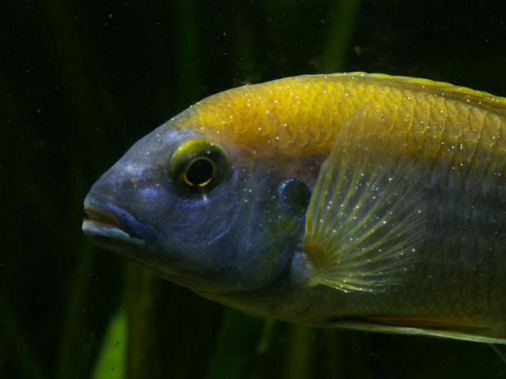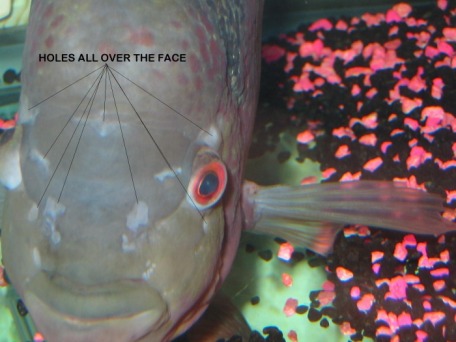THIS PAGE IS STILL UNDER CONSTRUCTION
ICK-White Spot Disease

The most common way of diagnosing Ich is by close observation of the infected fishes. It is revealed by the presence of small, (.5 to 1.0 mm) white dots scattered about on the fishes' skin and fins, as well as in the mouth, gills, and nostrils of the fish. Anywhere the fishes have a body surface - both inside and outside - is where the white spots can be found.
HITH-Hole in the head disease

Hole in the head, or HITH, is also known as head and lateral line erosion, or HLLE. They are just different ways of describing the same disease. It affects the sensory organs in the face as well as those along the lateral lines, causing pitting in both regions, hence its name. Much of this disease remains a mystery because many of the studies done have been inconclusive or contradictory in their findings. However there are generally four theories that stand out and have been substantiated numerous times by different studies: environment, diet, "the carbon theory", and Heximita infections.
Heximita

Hexamita Symptoms: The first symptom of slimy, white mucous feces, even while still eating and acting normal. Further signs are the fish hiding in the corner it's head down, head above the eyes gets thin, they blacken in color, and swim backwards.
Hexamita are intestinal flagellated protozoa that attack the lower intestine. Discus and other large cichlids, especially Oscars, are especially prone to Hexamita. As it is a disease of the digestive tract, a wasting away or loss of appetite may be experienced.An effective treatment is the drug metronidazole. A combined treatment in the food (1% in any food the fish will eat) and in the water (12 mg per liter) is recommended. Repeat the water treatment every other day for three treatments.
(This disease is often confused with another disease called Head and Lateral Line Erosion (HLLE), which use to be called "hole-in-the-head" disease, because both these diseases are often seen simultaneously in the same fish. Head and Lateral Line Erosion disease looks like cavities or pits on the head and face. It is not a protozoan disease, but is actually caused by environmental conditions.)
